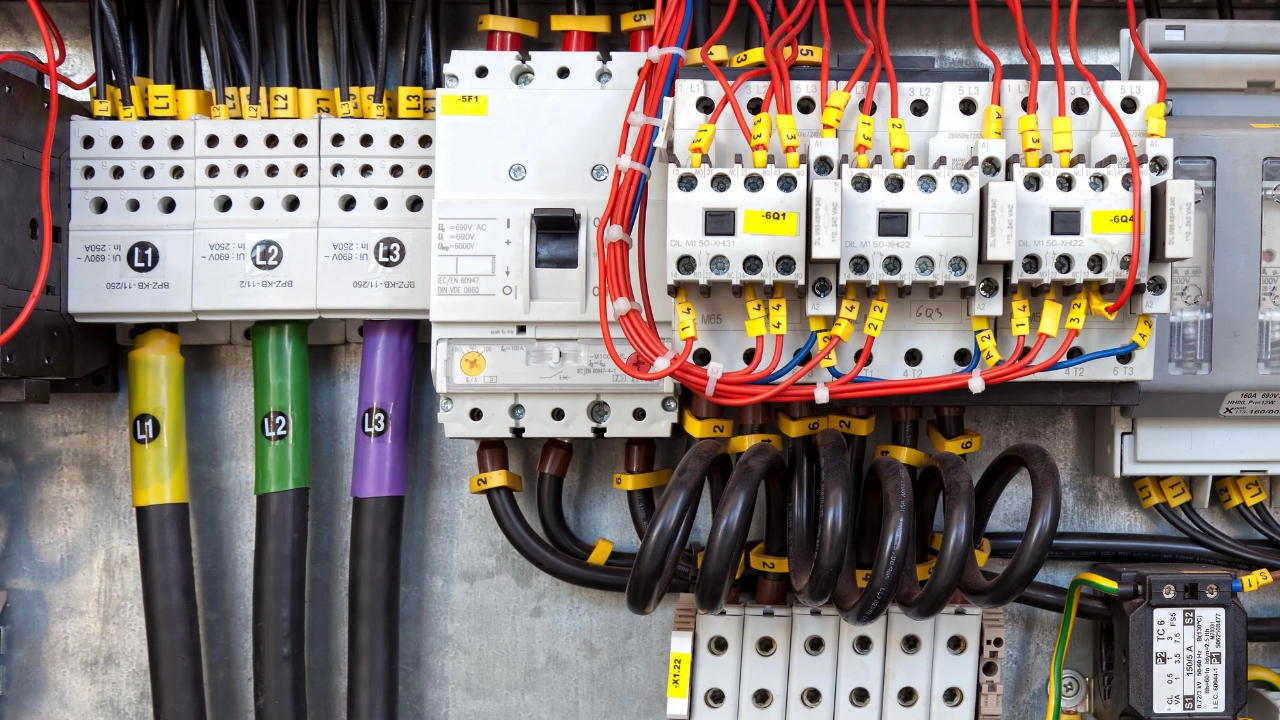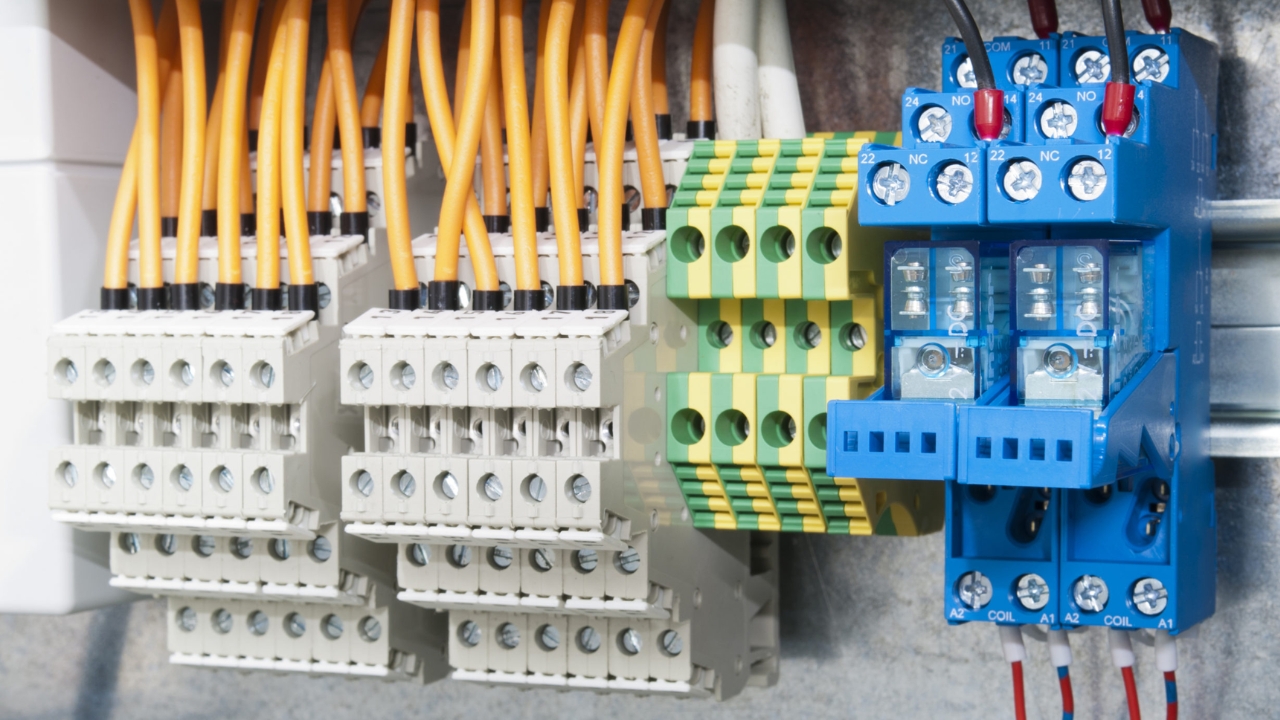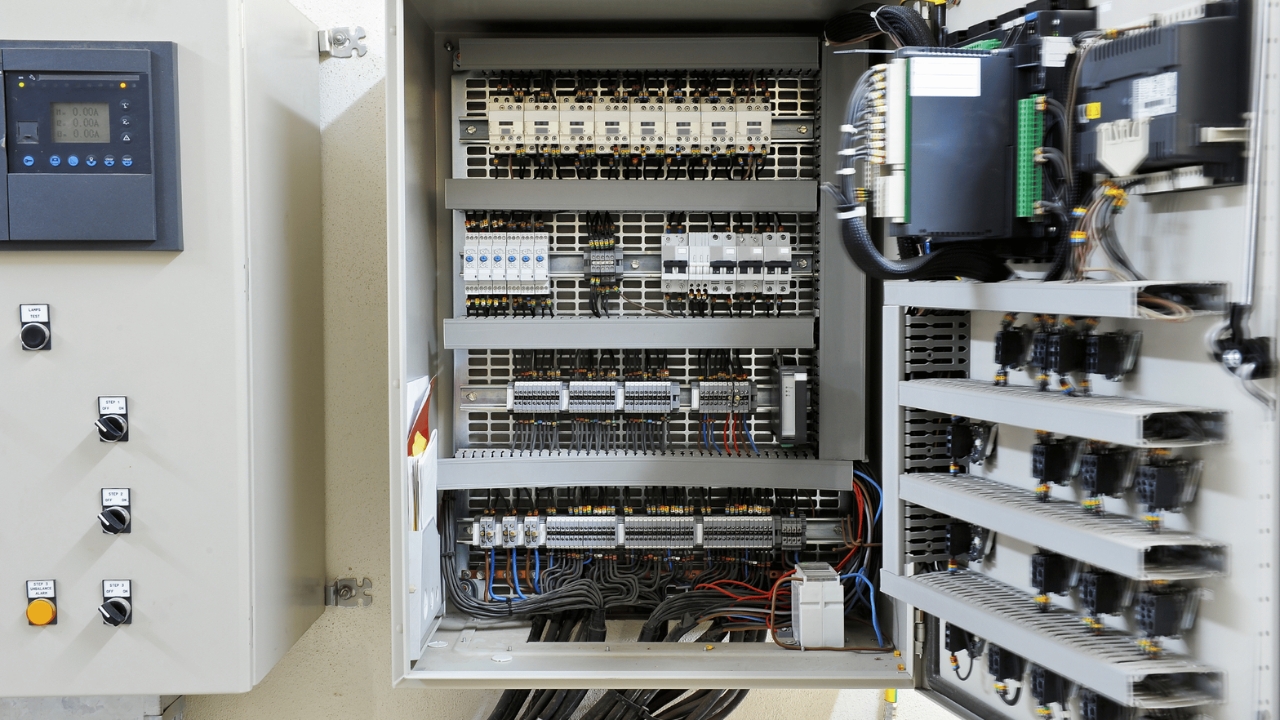Comprendre les bases des tableaux de commande électriques est essentiel au bon fonctionnement des machines, des systèmes et des processus. Cette compréhension s'applique aussi bien aux applications d'automatisation industrielle qu'aux applications résidentielles et commerciales. Cet article présente un aperçu de ce qu'est un tableau de commande électrique, de son fonctionnement, de la protection qu'il offre à votre système et de l'importance de ses différents composants.
Qu'est-ce qu'un panneau de contrôle électrique ?

Un tableau de commande électrique est un réseau de fonctionnalités qui régule et distribue l'énergie électrique via des composants de puissance regroupés dans une unité centrale. Il est essentiel à l'automatisation des systèmes électriques, à la supervision et à l'intégration de composants électriques tels que les machines, les systèmes CVC, etc. En termes simples, il s'agit de la pièce maîtresse qui intègre et supervise tous les équipements liés à votre système électrique et assure leur bon fonctionnement.
Composants du panneau de commande électrique

1. Enceinte : la couche externe
Le boîtier est la première couche visible à l'approche du tableau de commande électrique. Il forme une sorte de boîtier autour du panneau. Il sert de limite entre les composants et les éléments atmosphériques comme la poussière, l'eau et la chaleur.
- Objectif:Protège les composants internes de l'environnement extérieur.
- Matériaux utilisés:Selon l'application, l'acier, l'aluminium ou le plastique peuvent être utilisés pour le boîtier.
Différents types d'enceintes :
- Enclos intérieurs:Vous pouvez les utiliser dans des environnements contrôlés et secs.
- Enceintes extérieures : Ils protègent contre les pluies, les chutes de neige et les températures extrêmes.
- Environnements dangereux:Ces dispositifs sont spécifiquement conçus pour se défendre contre les gaz explosifs et autres matières dangereuses.
- Dimensionnement et ventilation : Choisir une taille de boîtier appropriée est important pour garantir une bonne ventilation et prévenir la surchauffe. Une circulation d'air insuffisante peut entraîner une surchauffe et une panne des composants, entraînant la panne de votre système.
2. Disjoncteurs : les gardiens de la sécurité
Pendant les travaux de construction, tout doit être sécurisé. Dans ce cas, disjoncteurs s'avèrent utiles. Ces composants sont intégrés à votre système et interrompent le fonctionnement d'un appareil en cas de courant trop élevé ou de court-circuit. Ils préviennent les incendies, les pannes système et les dommages matériels, qui peuvent s'avérer très coûteux.
Types de disjoncteurs :
- MCB (Disjoncteur Miniature) : Il s'agit de protections de circuit courantes pour les maisons, destinées aux circuits plus petits.
- MCCB (disjoncteur à boîtier moulé) : conçu pour les installations commerciales et industrielles légères.
- ACB (disjoncteur à air) : ce type est nécessaire pour une tension plus élevée dans les grands systèmes industriels.
Applications:En tant que composant habituel des panneaux de commande électriques modernes dans de nombreuses industries, les disjoncteurs assurent toujours une protection à vos maisons, bureaux et même machines industrielles.
3. Alimentation électrique : source d'énergie
Tous les panneaux de contrôle doivent disposer d'une source d'énergie appropriée. L'alimentation électrique transforme l'énergie électrique en une forme utilisable par le système. Elle assure un fonctionnement optimal du système en contrôlant la tension de sortie et les autres entrées.
Divers blocs d'alimentation
- Alimentation CA/CC : Les systèmes de contrôle ont généralement besoin d'être alimentés en courant continu. Avec cette alimentation, le courant alternatif est transformé en courant continu.
- Alimentation à découpage (SMPS) : compacte et très efficace, elle est utilisée pour convertir l'énergie et contrôler la tension.
- Alimentation linéaire : Moins efficace et plus simple, ce type d'alimentation est privilégié dans les cas à faibles besoins énergétiques.
PertinenceUn flux constant d'énergie électrique permet d'éviter les fluctuations dangereuses susceptibles d'endommager les pièces sensibles et d'entraîner une panne complète. Les irrégularités de courant peuvent causer des dommages importants ; l'alimentation électrique doit donc être stable et fiable.
4. PLC et le cerveau

Un panneau de contrôle comporte plusieurs composants fonctionnant ensemble pour atteindre un objectif collectif, mais si nous devions comparer les Automate programmable (automate programmable industriel) Dans le corps humain, ce rôle serait assumé par le cerveau. Son fonctionnement est extrêmement sophistiqué. Il décide de l'exécution des tâches en fonction des données qui lui sont fournies et peut soit automatiser les processus à l'aide de capteurs et d'interrupteurs, soit les exécuter manuellement.
Caractéristiques principales;
- Modules d'E/SChaque panneau de commande comporte des capteurs, des actionneurs, des interrupteurs et d'autres composants qui doivent être connectés à l'automate programmable industriel (API) pour que celui-ci puisse exécuter ses fonctions. Ces composants fonctionnent via ces modules.
- Unité de traitement: Tous les éléments mentionnés ci-dessus, connectés à l'automate programmable, sont d'importance secondaire comparés au cœur de l'automate, qui en est le principal responsable. Il s'agit d'un élément essentiel de l'automate, où toutes les informations sont transformées et où le fonctionnement du système de contrôle fonctionnel est établi.
- Ports de communication : Cet aspect permet également l'intégration d'autres appareils, comme des systèmes d'automatisation, avec un minimum de complications. Ces ports permettent la transmission de données entre l'automate programmable et d'autres appareils.
Application : En ce qui concerne les systèmes CVC, la fonction PLC est essentielle pour automatiser les opérations des usines de fabrication et des stations de traitement des eaux. La mise en œuvre d'un PLC améliore l'efficacité opérationnelle en réduisant les besoins de maintenance. Sans PLC, le panneau de commande devrait être actionné manuellement, ce qui est loin d'être idéal.
5. Relais et contacteurs : Les interrupteurs :
Les relais et les contacteurs réagissent aux signaux de commande et activent ou désactivent les circuits électriques. Ils sont donc essentiels pour assurer l'alimentation des différentes parties du système à un instant T.
- Relais:Les relais sont destinés aux circuits de faible puissance et aident les petits appareils ou systèmes tels que les lumières et les petits moteurs.
- Contacteurs : Les contacteurs, contrairement aux relais, sont spécialement conçus pour les circuits haute puissance et peuvent allumer de lourdes charges électriques telles que des machines industrielles ou des systèmes CVC.
Applications : Un relais peut servir à allumer une lumière dans votre maison ou votre bureau, tandis qu'un gros appareil de chauffage ou un moteur est actionné par des contacteurs. Il est essentiel de savoir quel appareil est compatible avec quel autre pour garantir le bon fonctionnement du système.
6. Interface homme-machine (IHM) : l'interface utilisateur
L'IHM vous permet d'interagir avec le système via une interface de contrôle. Un interrupteur manuel ou un câblage direct du système sont des options pratiques, mais l'absence d'IHM serait pour le moins gênante.
Types d'IHM :
- Interfaces tactiles : très courantes, elles facilitent l'interaction entre les opérateurs.
- Boutons poussoirs : simples et puissants, principalement utilisés pour les fonctions marche/arrêt de base.
- Voyant lumineux : vous informe en temps réel des problèmes au sein du système et si le système est opérationnel.
7. Borniers : les connecteurs

Comme tout système de contrôle du trafic, un bornier gère le système électrique et supervise les connexions pour garantir clarté et sécurité. Il garantit un câblage approprié pour un bornier, réduisant ainsi les risques d'erreur ou de défaut électrique, ce qui le rend sûr et organisé.
Types de borniers
- Borniers barrières : Ils empêchent l'interférence de circuits distincts en les séparant.
- Borniers traversants : Leur particularité est la boucle de fil ouverte qui permet le libre passage des fils des deux côtés.
- Borniers de terre : ces blocs sont conçus pour permettre une connexion sûre du fil de terre au système pour une protection contre les surtensions et les défauts.
Importance: Un marquage clair et des connexions sécurisées sont essentiels car un câblage incorrect pourrait potentiellement provoquer un court-circuit dans le système, un dysfonctionnement ou un incendie. Par conséquent, la gestion et la sécurité de la connexion établie sont de la plus haute importance.
8. Câbles et câblages électriques : le système nerveux
Le câblage du panneau de commande joue deux rôles : la transmission des signaux et l'alimentation des appareils. Il fonctionne comme le système nerveux du corps, car il fournit les informations nécessaires et assure le bon fonctionnement de l'ensemble.
Types de câbles :
- Câbles d'alimentation : Ces câbles servent à alimenter les composants du système de contrôle.
- Câbles de commande : Un câble de commande achemine le signal du PLC et transmet le signal du capteur ou du commutateur au PLC.
- Câbles de communication : ces câbles relient divers composants du système pour permettre la réception et la transmission du signal.
Importance: Le système peut devenir dangereux si les câbles sont endommagés. Des mesures préventives, comme un acheminement correct ou une isolation des câbles endommagés, sont nécessaires. Une mauvaise installation des câbles peut entraîner un court-circuit de l'alimentation, des données et du panneau de commande.
Conclusion

Comme pour tout système électrique, il est essentiel de comprendre les composants d'un tableau électrique. Chaque pièce joue un rôle important dans la sécurité et le bon fonctionnement du tableau. Pour garantir un fonctionnement optimal et fiable de votre système, vous devez choisir soigneusement l'installation et la maintenance de vos composants.
Questions fréquemment posées

Quelles sont les principales parties d’un panneau de commande électrique ?
Un tableau électrique comprend des disjoncteurs, des relais, une source d'alimentation, des contacteurs, une IHM et un câblage. Ces éléments permettent une gestion sûre et automatique de la distribution d'électricité.
Quels composants dois-je choisir pour le panneau de commande électrique et quels facteurs dois-je prendre en considération ?
De plus, l'environnement et le système dans son ensemble doivent être pris en compte, ainsi que la tension et le courant nominal des composants. N'oubliez pas que la fiabilité du système dépend également de la compatibilité entre les composants.



